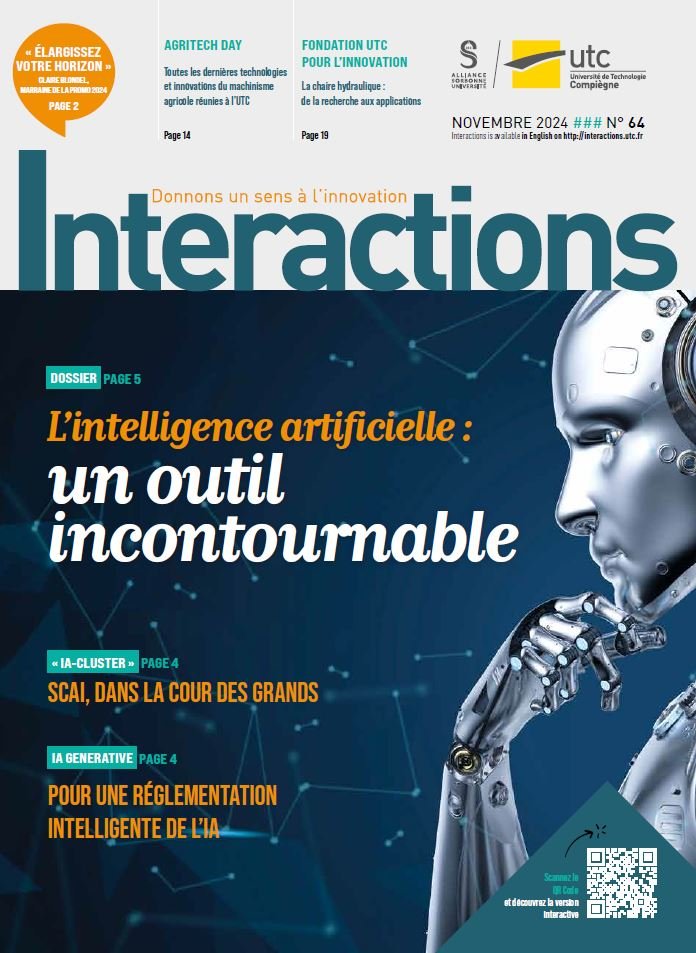The academic Chair of Hydraulics: from research to applications

The academic Chair of Hydraulics was created in 2010 to ensure the long-term future of hydraulic power transmission teaching at UTC as part of the engineering curriculum. For the CETIM, viz., the representative of the mechanical engineering professions in France, it was also a question of providing scientific expertise in the field of hydraulics.
UTC and the Centre technique des industries mécaniques (CETIM) created the Hydraulics and Mechatronics Chair under the initiative of hydraulic transmission manufacturers and their trade association Artema, with support from the Picardie Region and the European Regional Development Fund (Feder). “The technological situation is clear: hydraulics, with its physical properties such as power density and mass, cannot be replaced in the short term, but it must be transformed if it is to retain its place in a low-carbon energy perspective, i.e., offering better energy performance, reduced operating noise and improved compactness and adaptability to electric drives. In short, the creation of a Chair was justified by two factors: the need for training and the development of this little-known technology, which is invisible and often confused with dam hydraulics and which is still essential for powering machines”, explains Chairholder Éric Noppe, who joined UTC as a contract lecturercum- research engineer after 25 years’ experience in industry. “The needs in the field of hydraulics are very promising, because, paradoxically, the electrification of mobile machines will generate a lot of work to adapt hydraulic transmissions. Transmissions that are quieter, run faster, are more energy-efficient and support new energies. So many challenges ahead!
A whole ecosystem dedicated to innovation
The Chair makes it possible to include a hydraulics course in the engineering curriculum, with 25 to 30 students trained each year. The Chair generates a technological research activity in partnership with a test and experimentation platform integrated into the UTC Roberval mechanical engineering laboratory. Finally, a continuing education activity for industrialists completes the work, with a training rig operated with a partner. “Research engineers, doctoral students and engineering interns are the driving force behind the Chair. The UTC Foundation for Innovation provides funding through patronage. In fact, the CETIM, a sponsor of the UTC Partnership Foundation, has financed the operation of the Chair from the outset. Industrial designers or integrators of hydraulic functions participate in collaborative research projects and indirectly in the training of engineers in the incubator. A network of partner universities, such as Insa Lyon, Insa Toulouse, the University of Modena and Purdue Lafayette University, form an enriching collaboration. SATT Lutech, a research funding partner, is also supporting a patent filed within the framework of the Chair, for a drone with hydraulic transmission”, adds Éric Noppe. The Chair is involved in a number of R&D projects, including the European H2REF-DEMO project. This involves the design and production of an innovative hydrogen compressor that will eventually be the largest in Europe for filling the tanks of future hydrogen-powered trucks and buses. A scale 1 prototype will be operational in 2025. UTC is responsible for the complete modelling of the process, control and command assistance and for the design of the hydraulic generation system. “This is a real breakthrough in the field of hydrogen compression. Hydraulics offer the prospect of reducing the energy consumed in filling vehicle tanks by more than 50%, with a new, innovative filling method.
” “Nothing can be done alone”
Hydraulics issues are coupled with electrical engineering, fluid mechanics and flow calculation, optimization and design methods in industrial engineering, acoustics, tribology and materials, command and control. “In short, this is a richly applicable playground for Roberval’s scientific activities. For students, it’s a way of perfecting their knowledge during the degree cycle, but also of participating in industrial R&D projects after graduation. For them, the Chair can be seen as an ideal platform for entering industry with a recognized specialization. They benefit not only from real industrial subjects, but also from a high-level learning requirement that stimulates them. For the mechanical research engineers and scientists who work in the Roberval laboratory, this means a large number of collaborative subjects and case studies, because in a field as multiphysical as hydraulics, nothing can be done alone”, adds Éric Noppe, who, among the Chair’s recent research contributions, cites the creation of a miniaturized hydraulic servo-valve that did not exist on the market. A need justified by the hydraulic drone. “But the main contribution has been made by all the engineers who have graduated from UTC and gone on to swell the ranks of industrial users of hydraulics after their time with the Chair.”
KD




